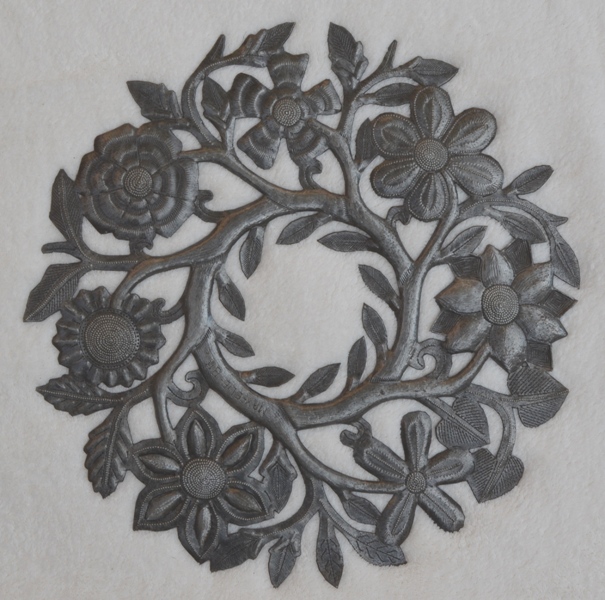
The grassy roots of vetiver are blended with floral tones to create many of today’s most expensive perfumes.
Who knew?
A grassy plant known as vetiver- originally introduced in the 1940s as a soil anchor to reduce erosion on the steep, dry, denuded mountainsides of southwestern Haiti – has become the premium cash crop of the region. The Haitians appreciated it for its quick-growing density and began cutting it seasonally for thatch, but its real value, as it turns out, is in its roots. When harvested and boiled down, the root oil becomes a primary ingredient for the world’s perfume industry, which demands 100-120 tons of vetiver annually. Haiti is now the largest producer, raising over half of the world’s total, with smaller quantities grown in Java, China, Madagascar, Brazil and Paraguay. Pierre, a Dutch-trained Haitian agronomist calls vetiver, “a miracle plant. You dig it up, cut off the roots, plant it right back and it produces again next year. It needs no irrigation or fertilizer.”
Vetiver oil is the major ingredient in some 36% of all western perfumes, Caleche, Chanel No. 5, Dioressence, Parure, Opium, to name a few. (For a comprehensive list, click here: http://www.fragrantica.com/notes/Vetiver-2.html) It’s value lies in the fact that it blends easily with other aromatic oils and because its fixative properties promote lasting fragrance. In the words of Dr. Chandra Shekhar Gupta, Senior Research Fellow at the National Bureau of Plant Genetic Resourses in New Delhi, vertiver possess, “aromatic verdancy, fragrant rootiness, subtle, refreshing citrusiness, enjoyable earthiness, a wonderful hint of woodiness, and a certain Guerlainesque leathery-ambery darkness in the drydown.”
In addition to its direct perfumery applications, vetiver oil in its diluted form is extensively used in after-shave lotions, cosmetics, air fresheners and bathing products, as well as flavoring syrups, ice cream, and acting as a food preservative. It is used in cool drinks, incense sticks, and (I love this part!) for reducing pungency of chewing tobacco preparations, thereby providing a sweet note to other masticatories. Additionally, roots have been used for making screens, mats, hand fans and baskets. In Java, screens are hung like curtains in the houses and when sprinkled water, imparting a fragrant coolness to the air.
There is no synthetic substitute available, making vertiver a crop with excellent value and staying power. Approximately 150 pounds of vetiver roots are required to produce a scant 1 lb of oil. The roots are cut, cleaned, delivered and sold by the farmers to distilleries which produce the oil. From there, it is transported to major distributers of essential oils who in turn, sell to the perfume industry in 55 gallon drums, (sound familiar?!) the contents of which being worth between $30,000 – $40,000 each.
Unfortunately, the vetiver farmers of Haiti don’t currently collect their fair share of that princely sum, but that is changing. Following the 2010 earthquake, both perfumers and distillation companies became (suddenly and curiously) overcome with the desire to engage in fair trading and sustainability practices. Schools were built, roads were excavated, wells were dug, and farming cooperatives were formed. To date, approximately half of all Haitian vetiver producers are participating in co-ops which protect their prices, teach good conservation practices, and provide incentives for superlative crops. As a result, the farmers’ daily earnings have increased dramatically; up almost 30% since 2010. This is an astronomical growth in earnings, but bear in mind, the average daily wage back then was $2. In other words, there’s still a long ways to go, but the trend is both important and encouraging.
Contributed by Linda for Beyond Borders/It;s Cactus
